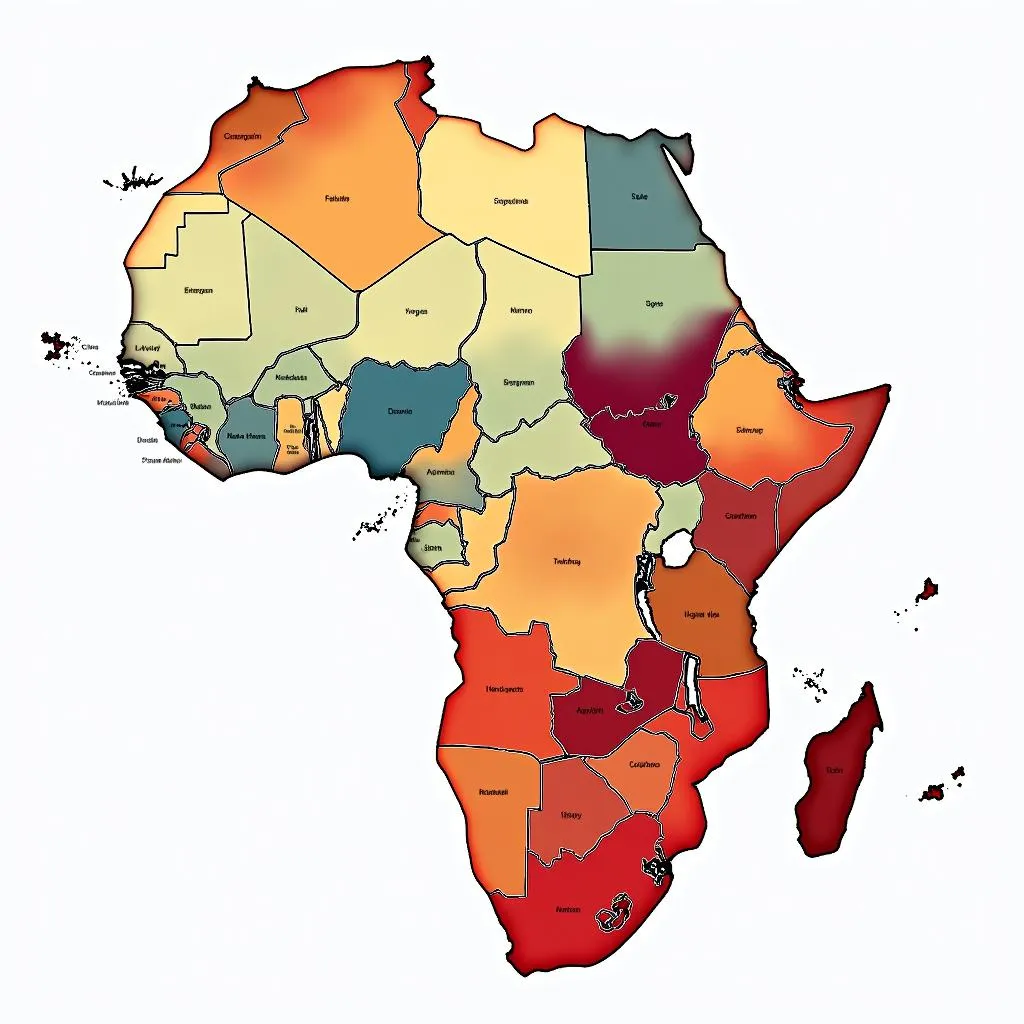African Countries and Regions Population: A Diverse and Growing Landscape
With a population exceeding 1.4 billion people, Africa is a continent of incredible diversity, encompassing a tapestry of cultures, languages, and landscapes. This vast population is spread across 54 recognized countries and numerous territories, each with its unique demographic profile and growth trajectory. Understanding the population dynamics of African countries and regions is crucial for grasping the continent’s socio-economic challenges and opportunities.
Unveiling the Demographics: Factors Influencing Population Distribution
Africa’s population distribution is far from uniform, with some areas experiencing high population densities while others remain sparsely populated. Several factors contribute to this uneven distribution, including:
- Climate and Geography: Arid and semi-arid regions like the Sahara Desert have significantly lower population densities compared to regions with favorable climates and fertile land, such as the Nile River Valley and the Great Lakes region.
- Economic Opportunities: Urban areas and regions with significant natural resources tend to attract larger populations due to better employment prospects and economic opportunities.
- Historical Factors: Colonialism and historical migration patterns have also played a role in shaping the current population distribution across the continent.
 Population Density Map of Africa
Population Density Map of Africa
The Powerhouses: Most Populous African Countries
Nigeria, with a population exceeding 200 million, stands as Africa’s most populous country. This economic powerhouse is followed by Ethiopia, Egypt, and the Democratic Republic of Congo, each boasting populations exceeding 100 million. These countries, with their large and growing populations, play a pivotal role in shaping Africa’s future.
- Nigeria: Known for its vibrant culture, oil resources, and entrepreneurial spirit, Nigeria faces the challenge of providing adequate infrastructure and services to its rapidly growing population.
- Ethiopia: Experiencing rapid economic growth, Ethiopia is focusing on agricultural development and industrialization to meet the needs of its burgeoning population.
- Egypt: With a rich history and strategic location, Egypt grapples with the task of creating employment opportunities and improving living standards for its large population concentrated along the Nile River.
Youthful Energy: The Age Structure of African Nations
A striking feature of Africa’s demographics is its youthful population, with over 60% of the continent’s population under the age of 25. This youthful demographic dividend presents both opportunities and challenges for African countries:
- Economic Potential: A young and energetic workforce can drive innovation, entrepreneurship, and economic growth.
- Education and Healthcare: Investing in quality education and healthcare systems is crucial to equipping the younger generation with the skills and well-being necessary to thrive.
- Job Creation: Creating sufficient employment opportunities for the burgeoning youth population is paramount to harnessing their potential and preventing social unrest.
Navigating the Future: Population Growth and Sustainable Development
Africa’s population is projected to continue growing in the coming decades, posing significant challenges and opportunities for the continent. Addressing issues such as:
- Food Security: Enhancing agricultural productivity and ensuring food security for a growing population is crucial.
- Urbanization: Managing rapid urbanization and investing in sustainable infrastructure in growing cities is essential.
- Climate Change: Building resilience to the impacts of climate change, such as droughts and floods, is vital for sustainable development.
Conclusion
Understanding the population dynamics of African countries and regions is essential for crafting effective policies and strategies to address the continent’s unique challenges and harness its vast potential. By investing in education, healthcare, infrastructure, and sustainable development initiatives, Africa can pave the way for a brighter future for its growing population.

